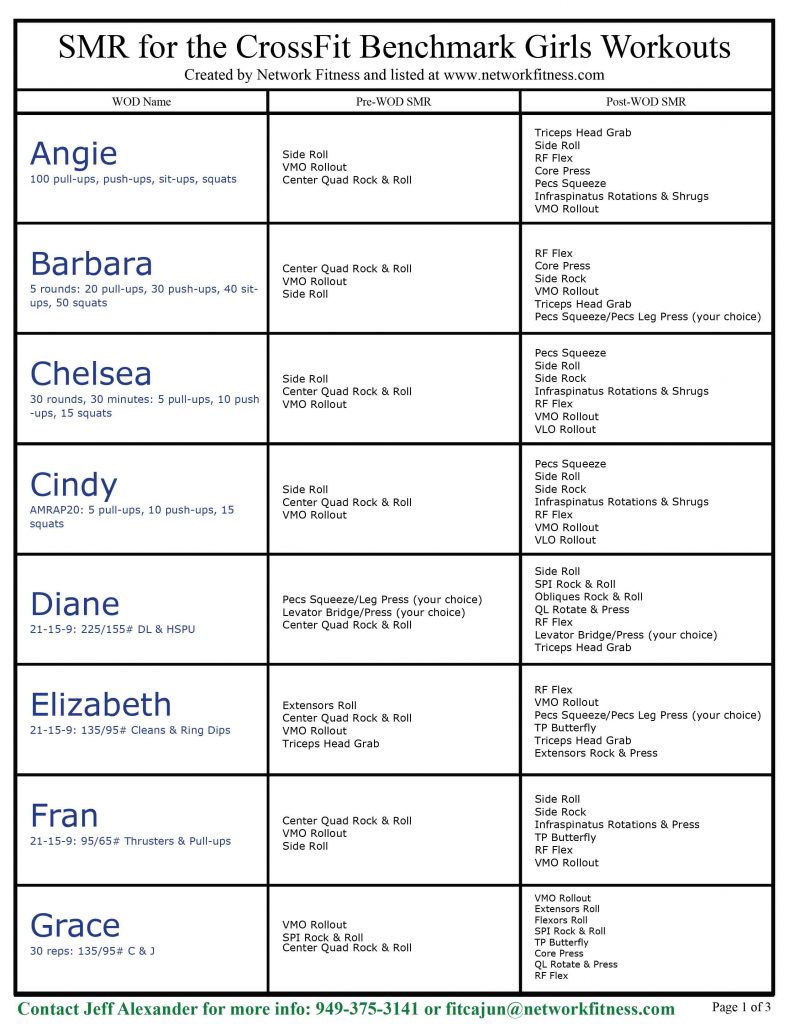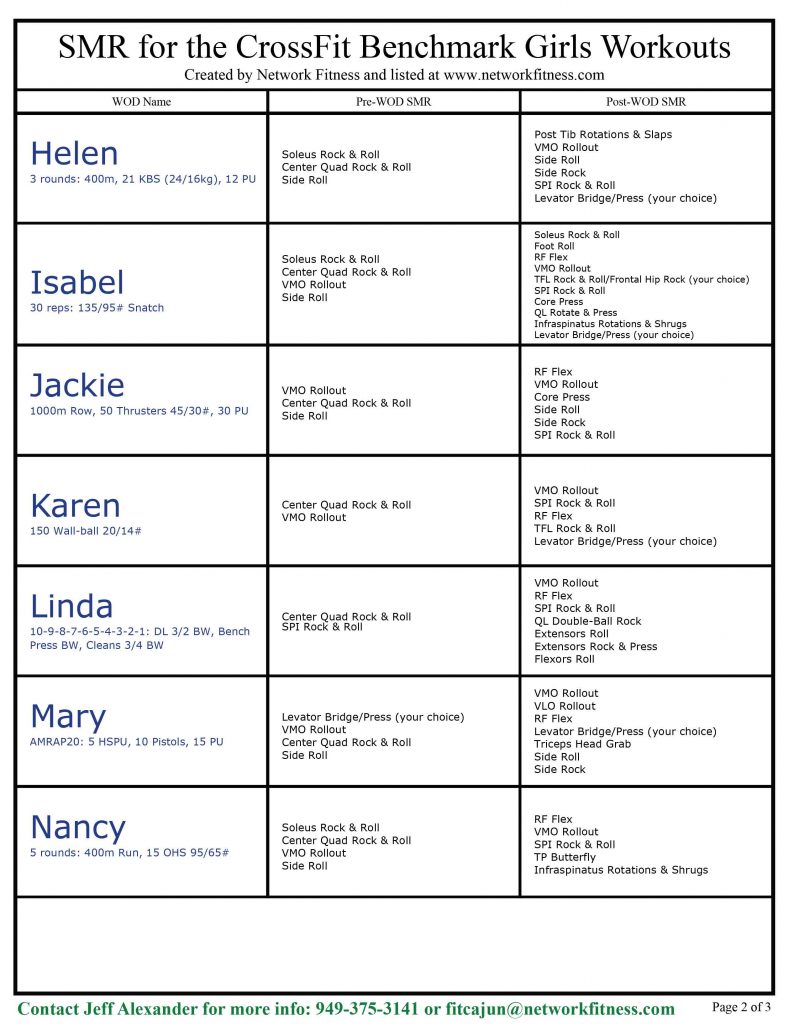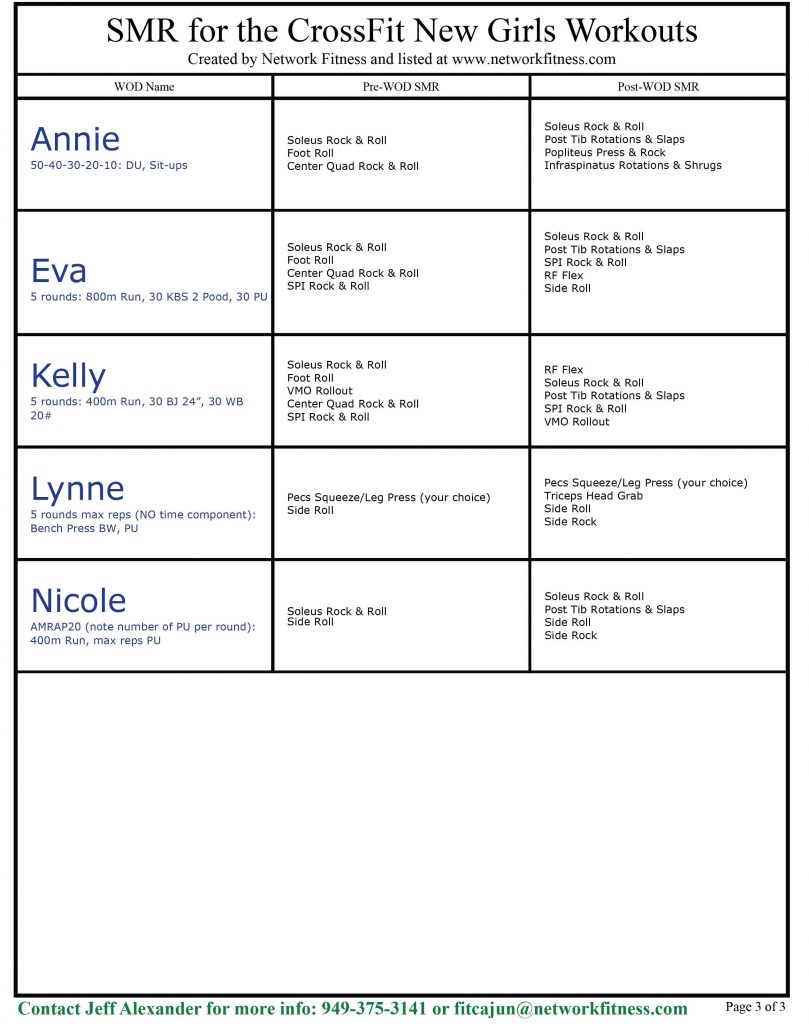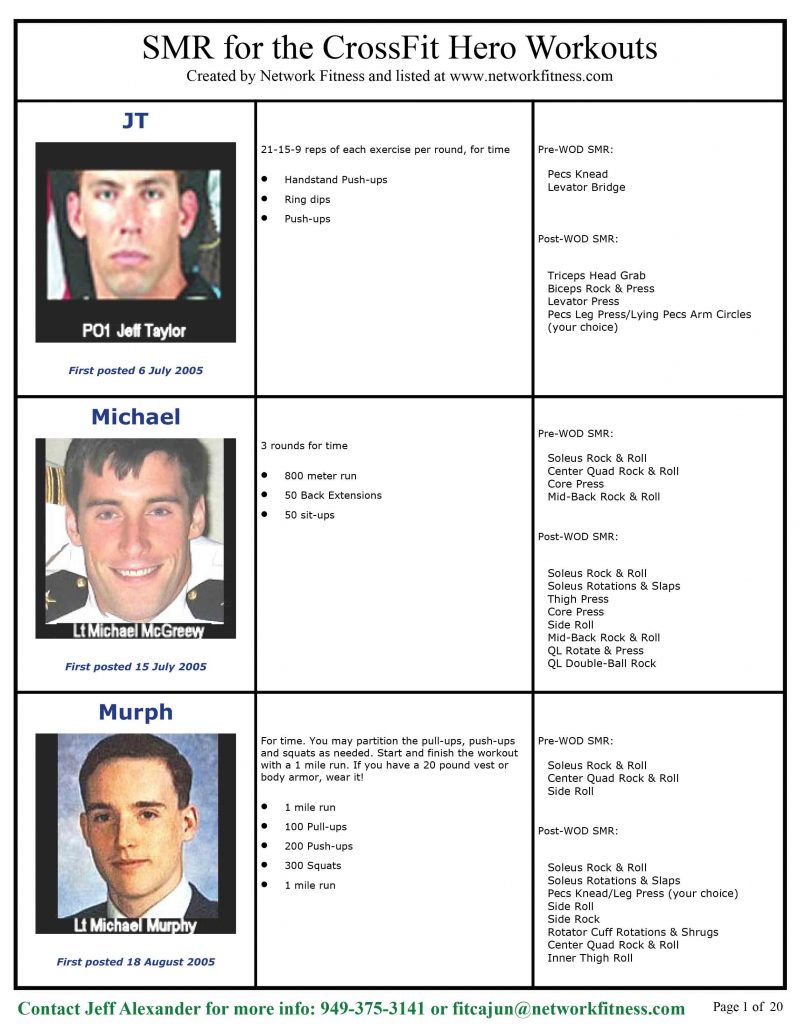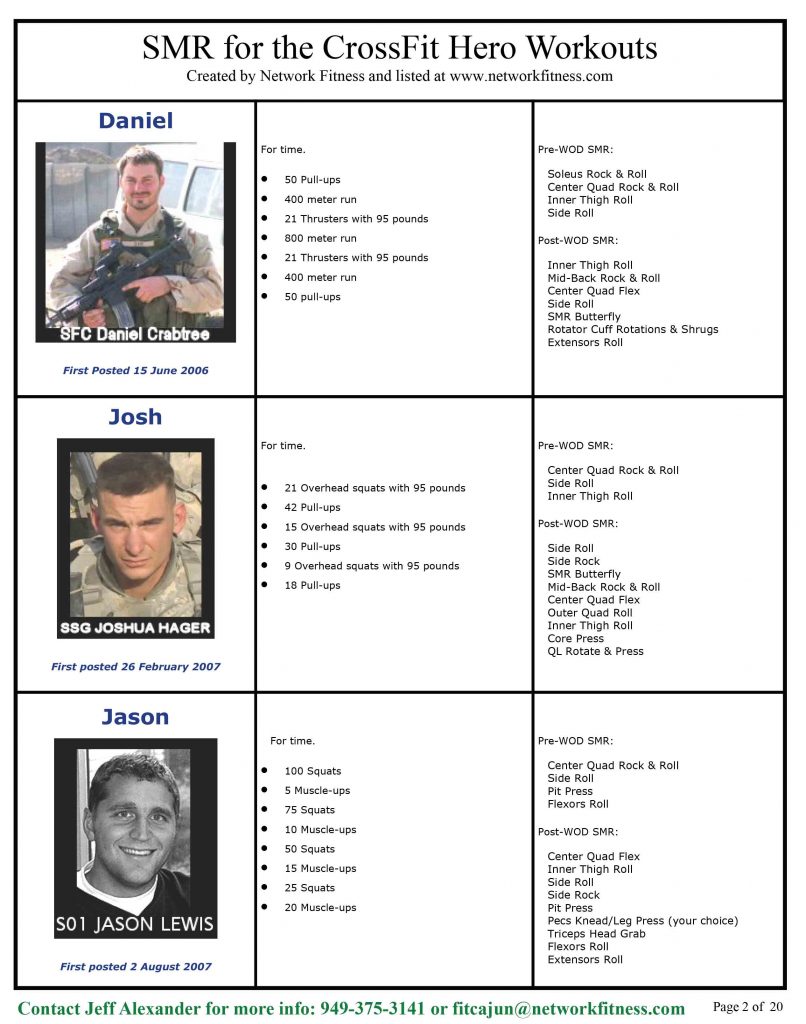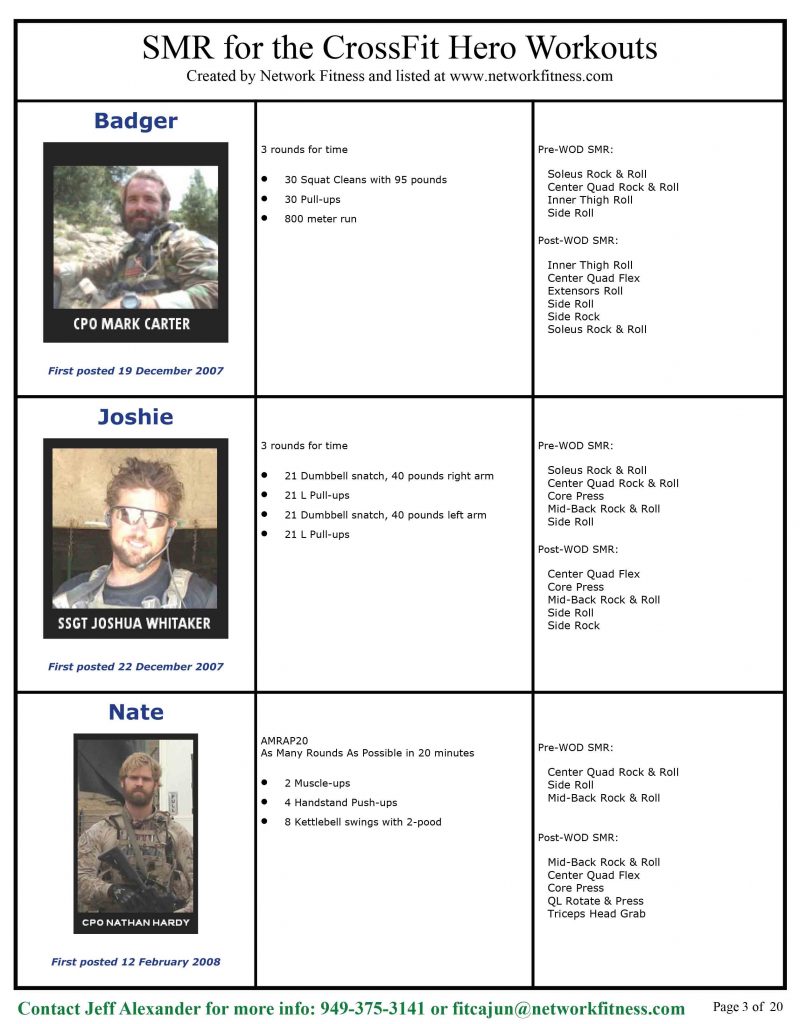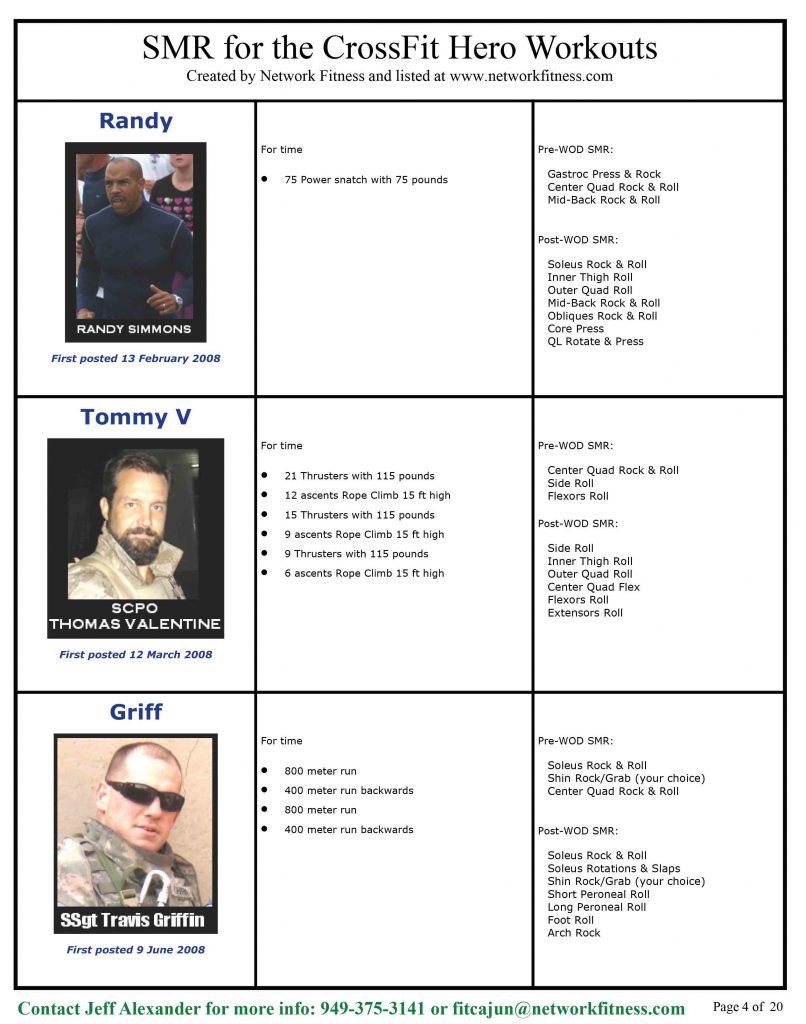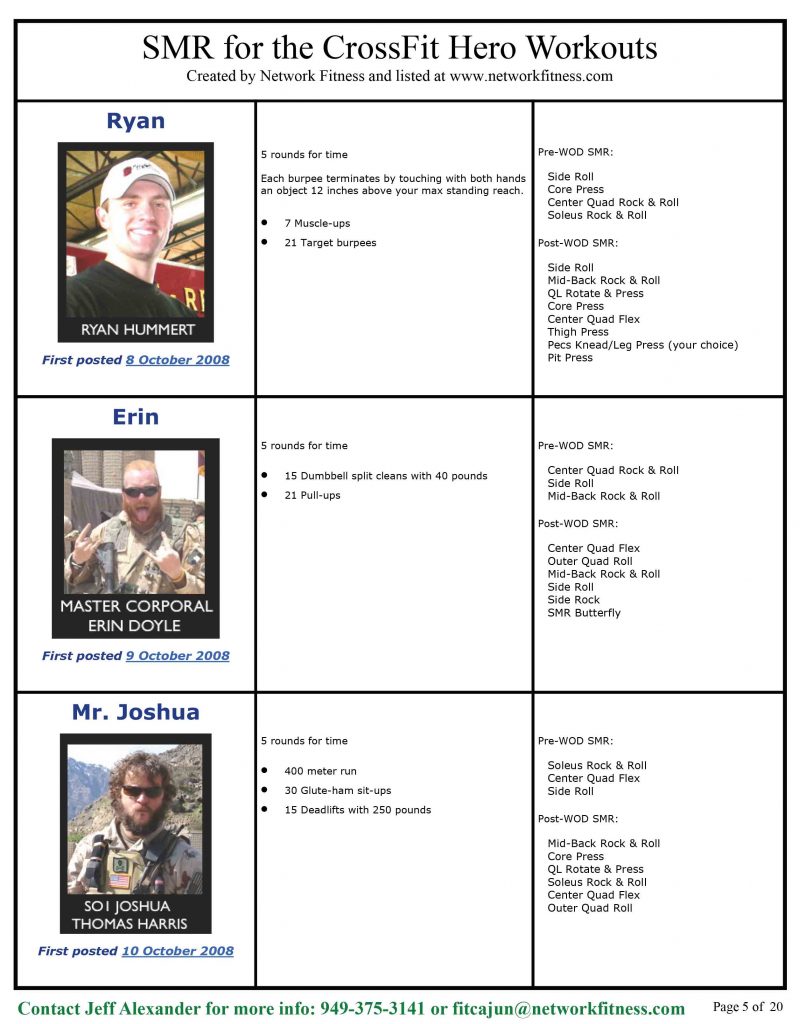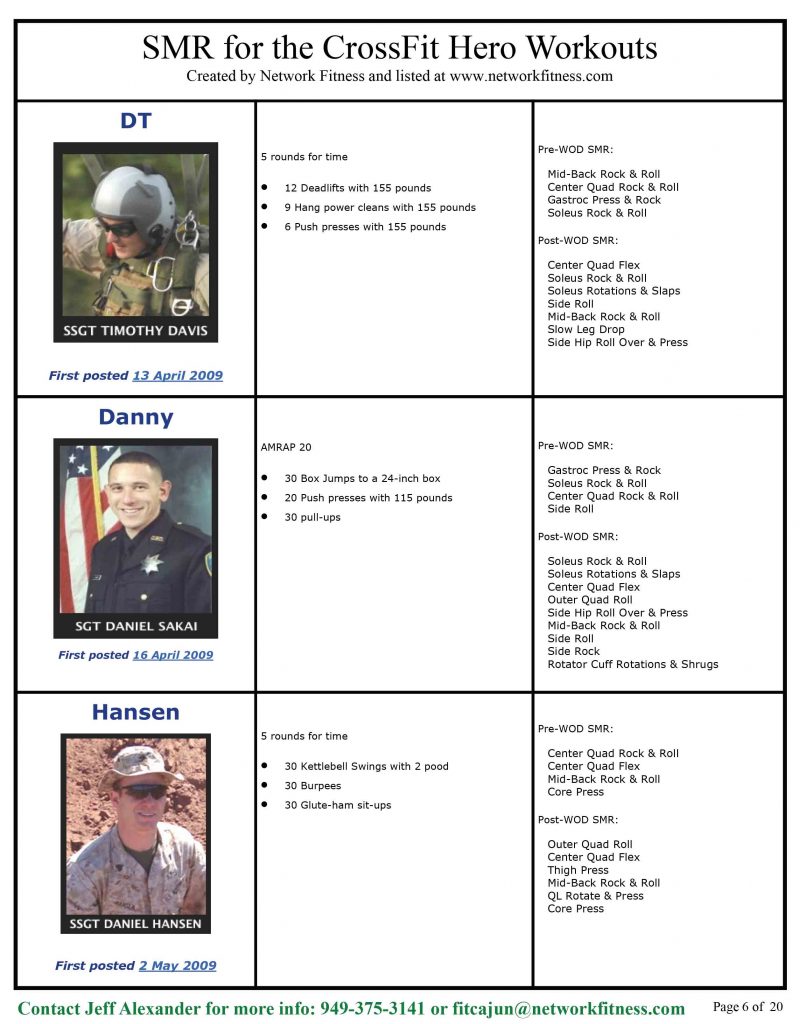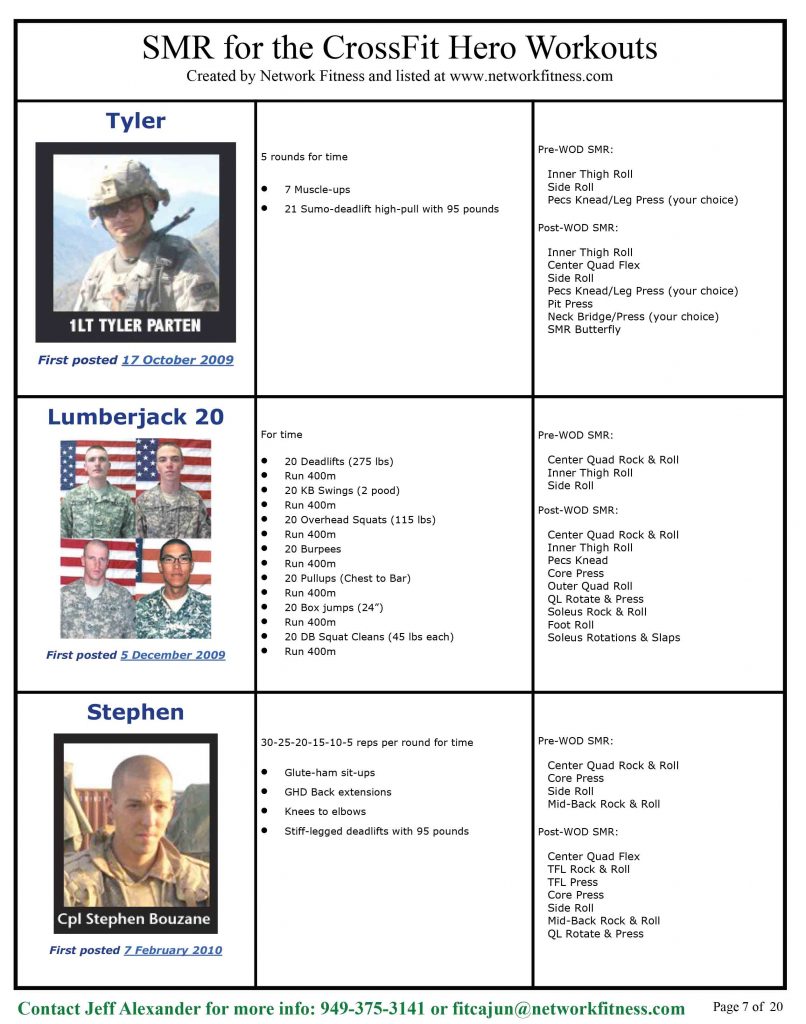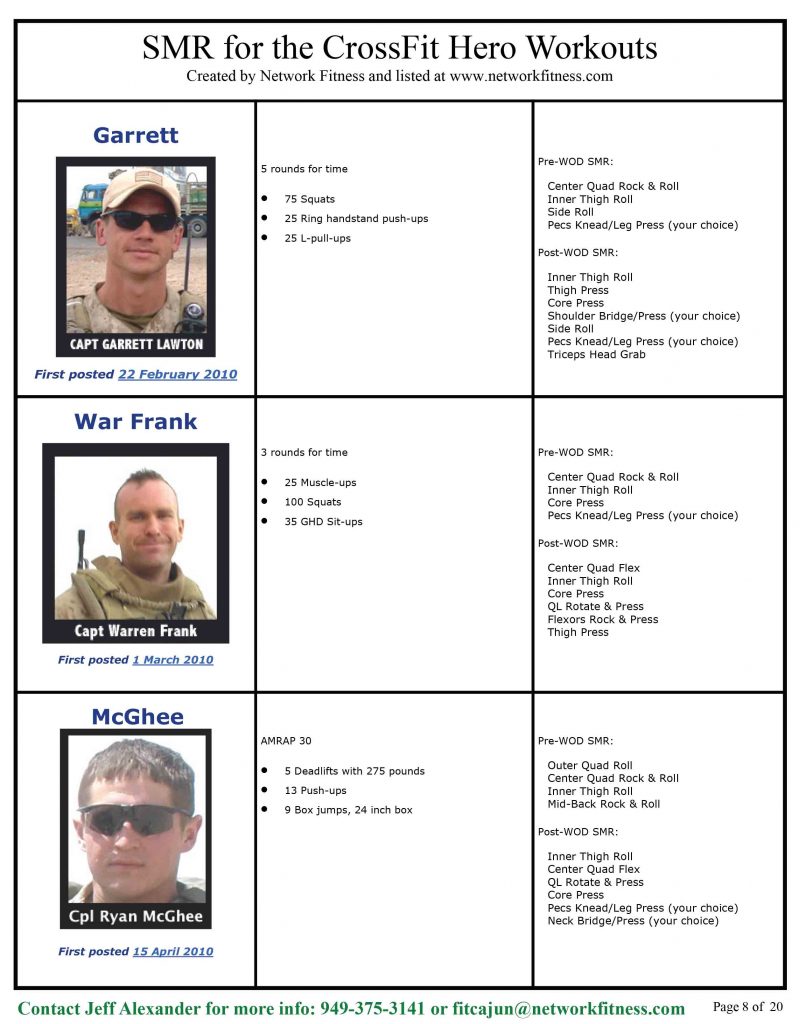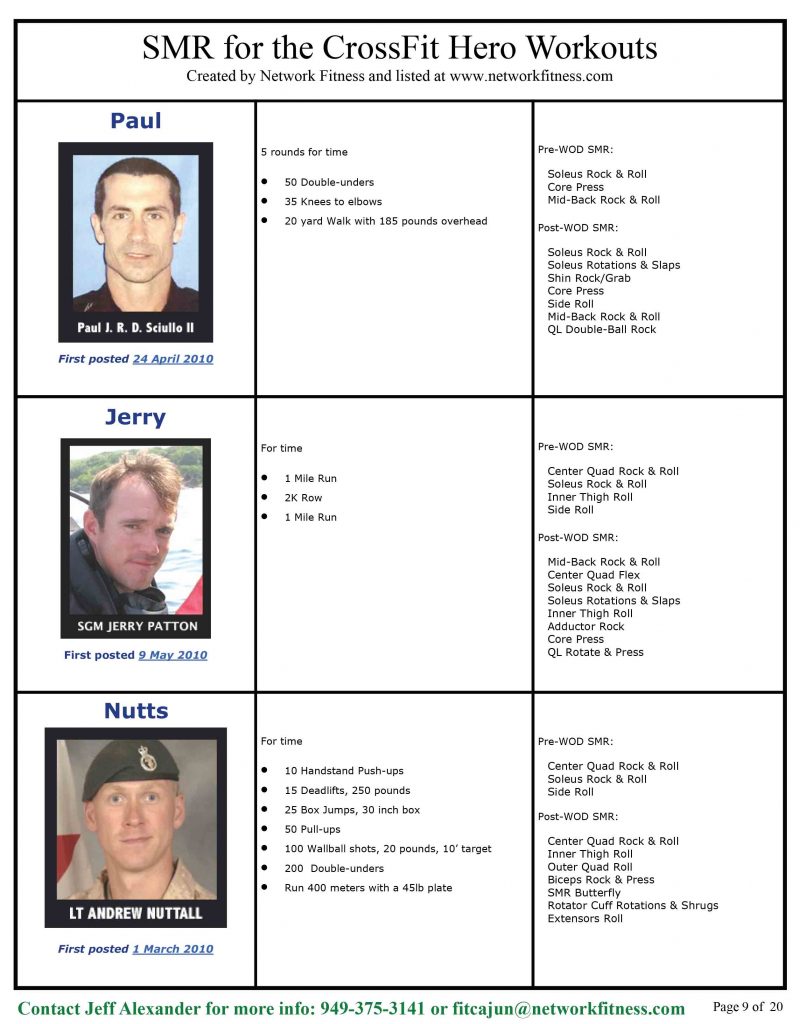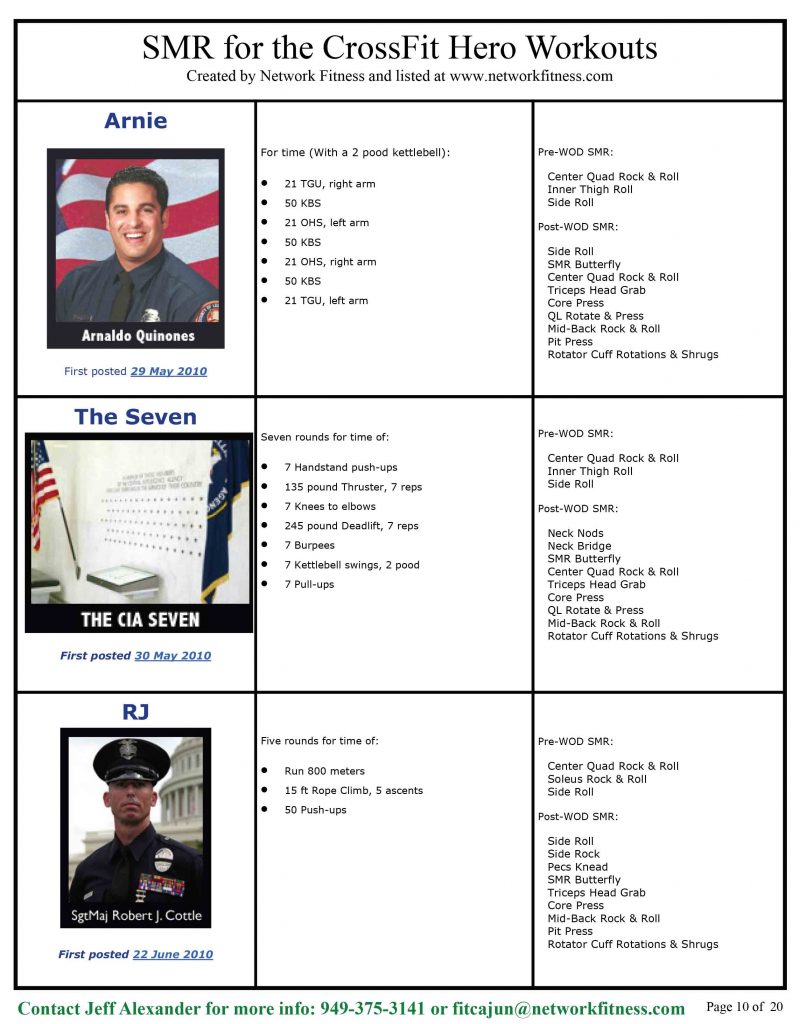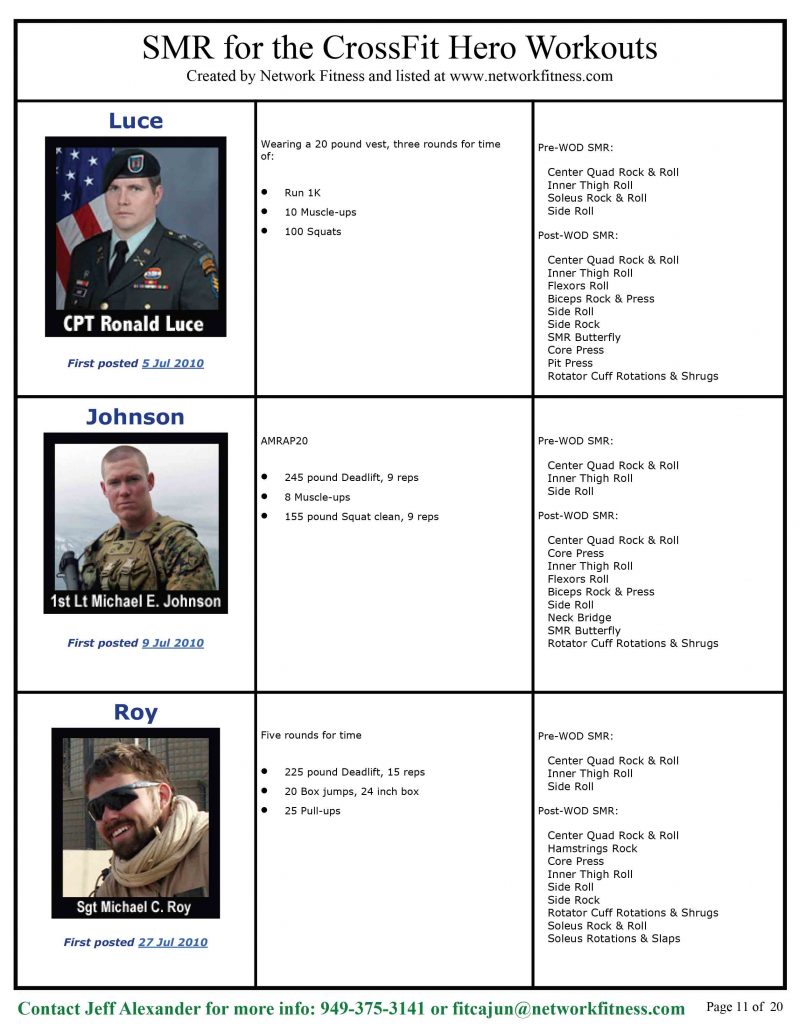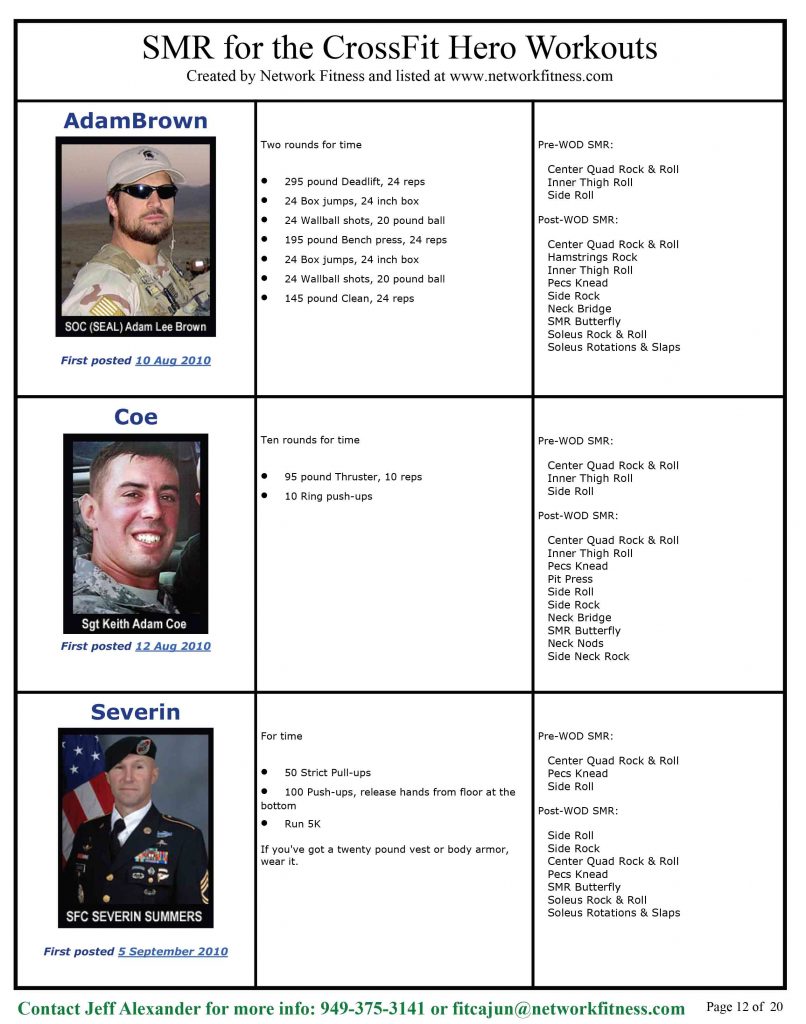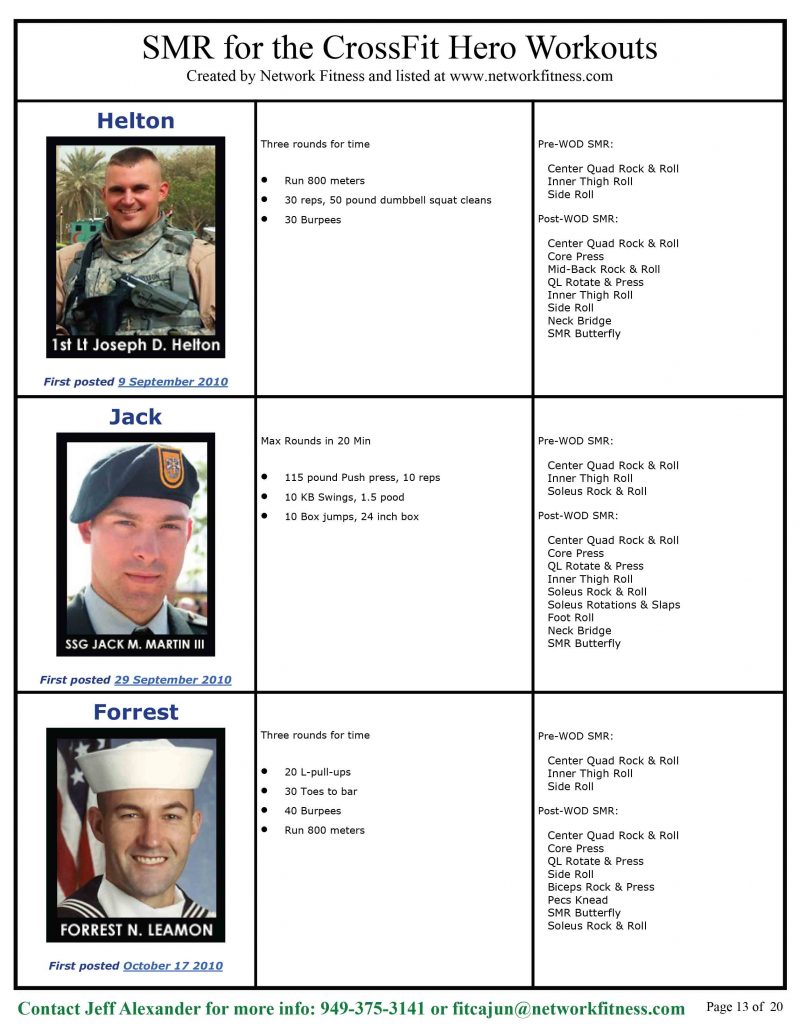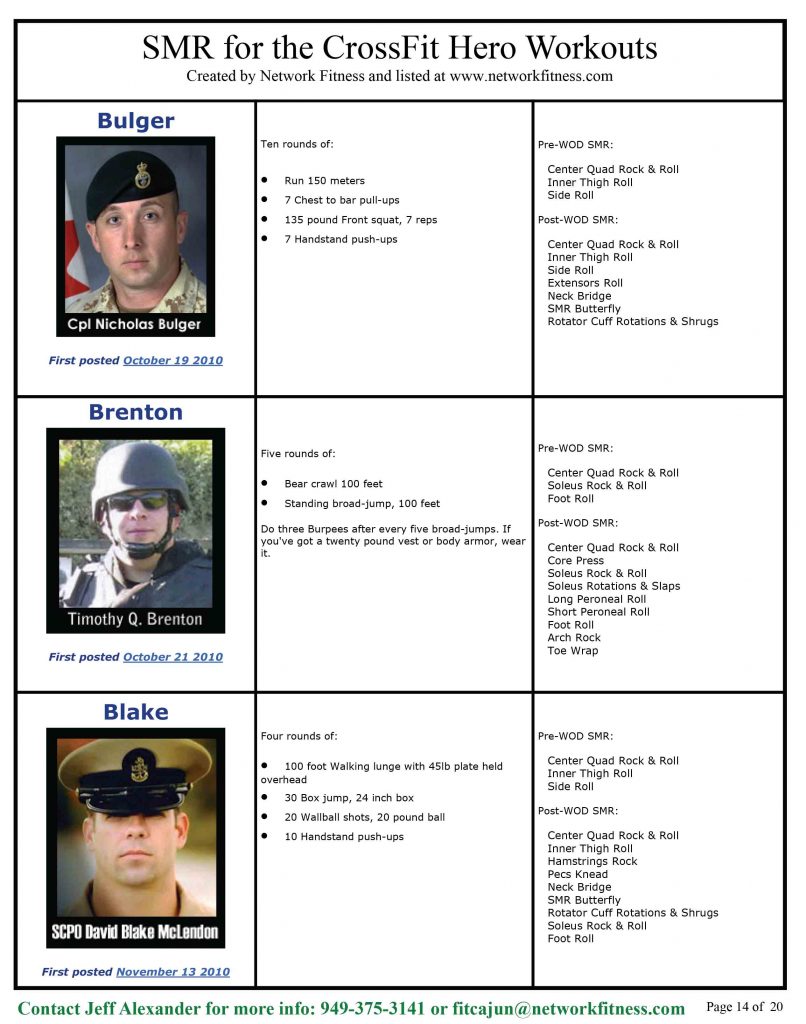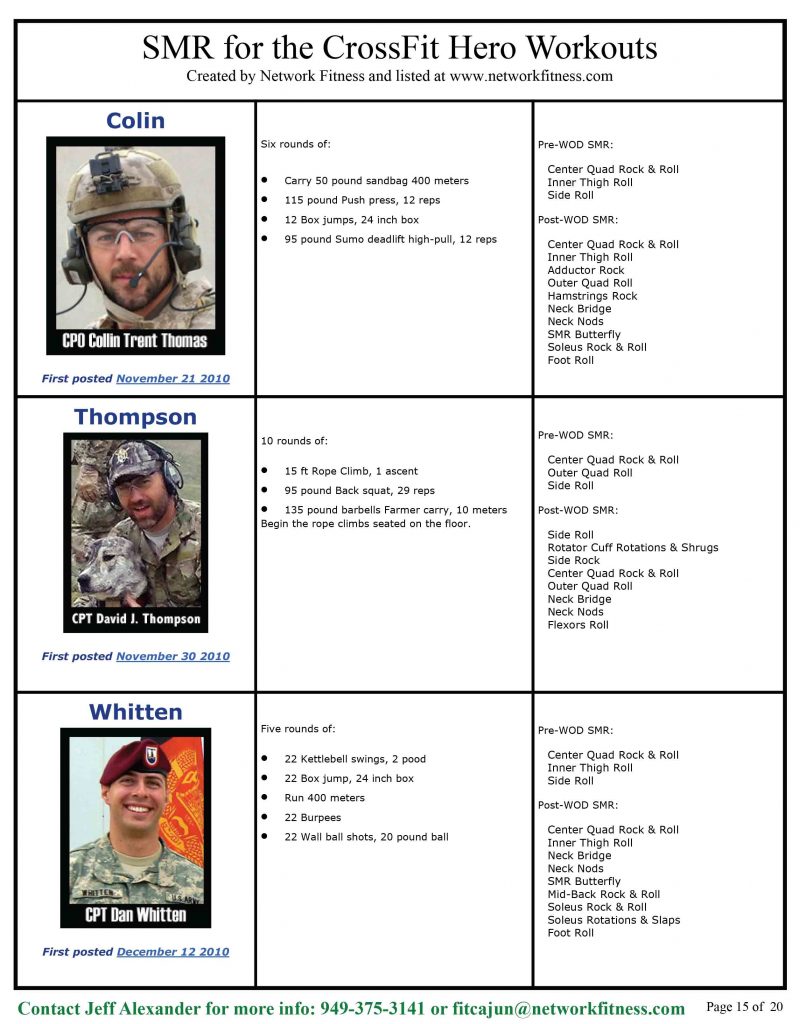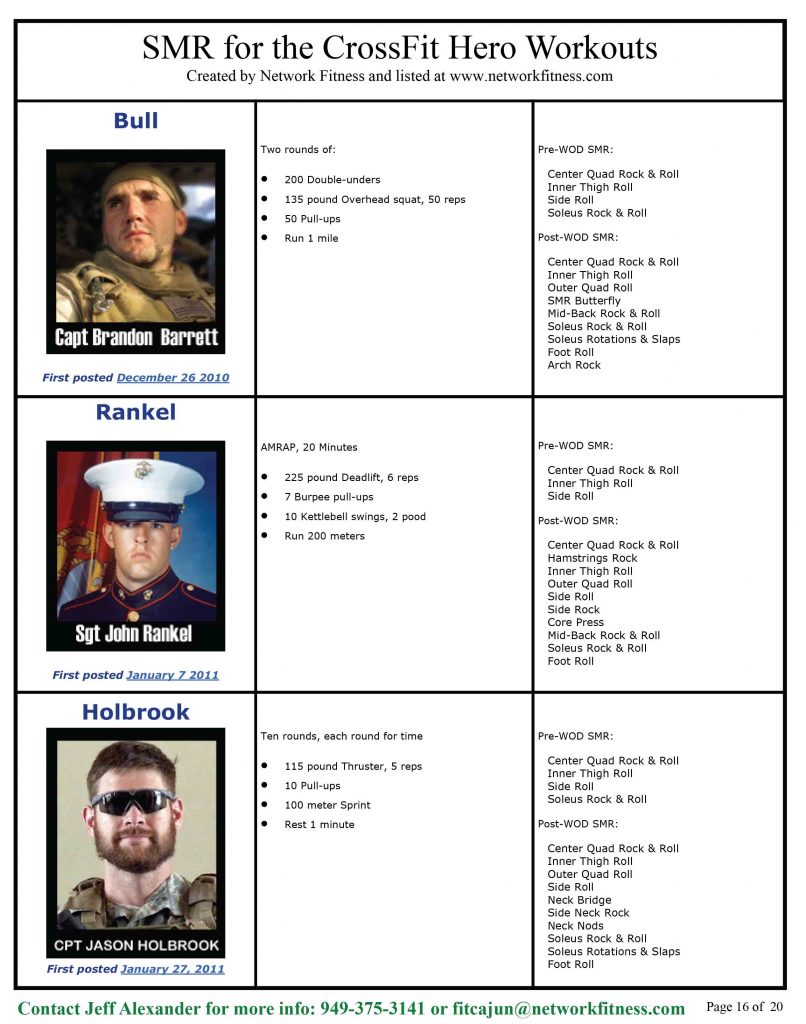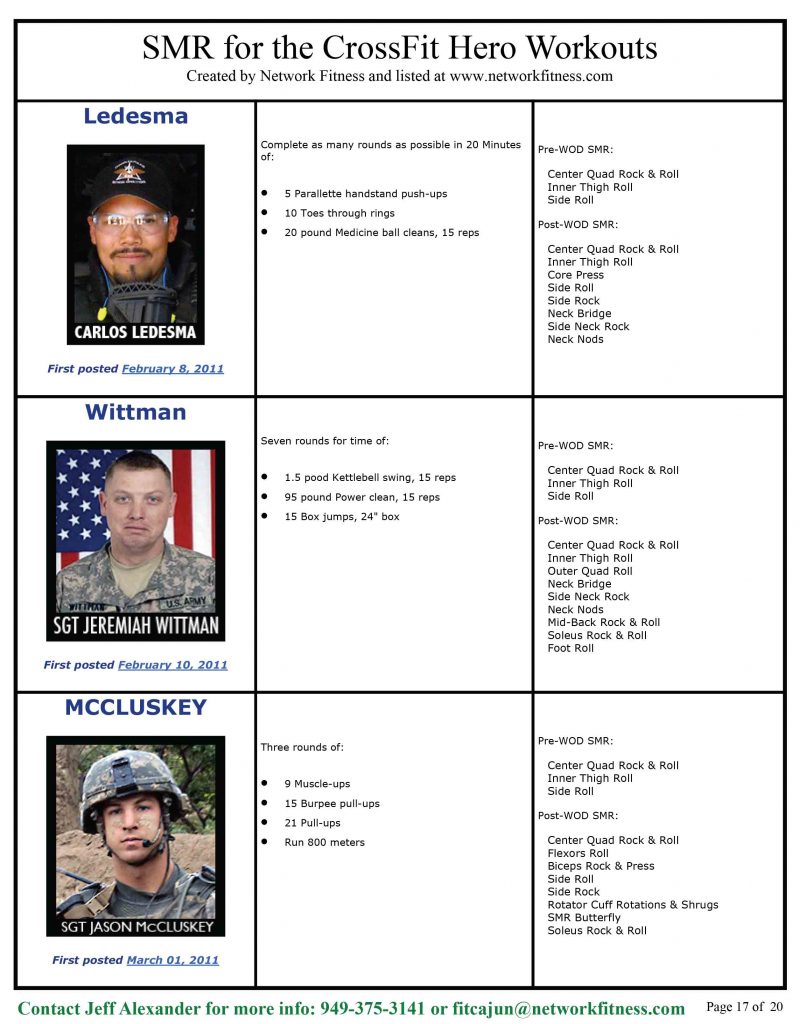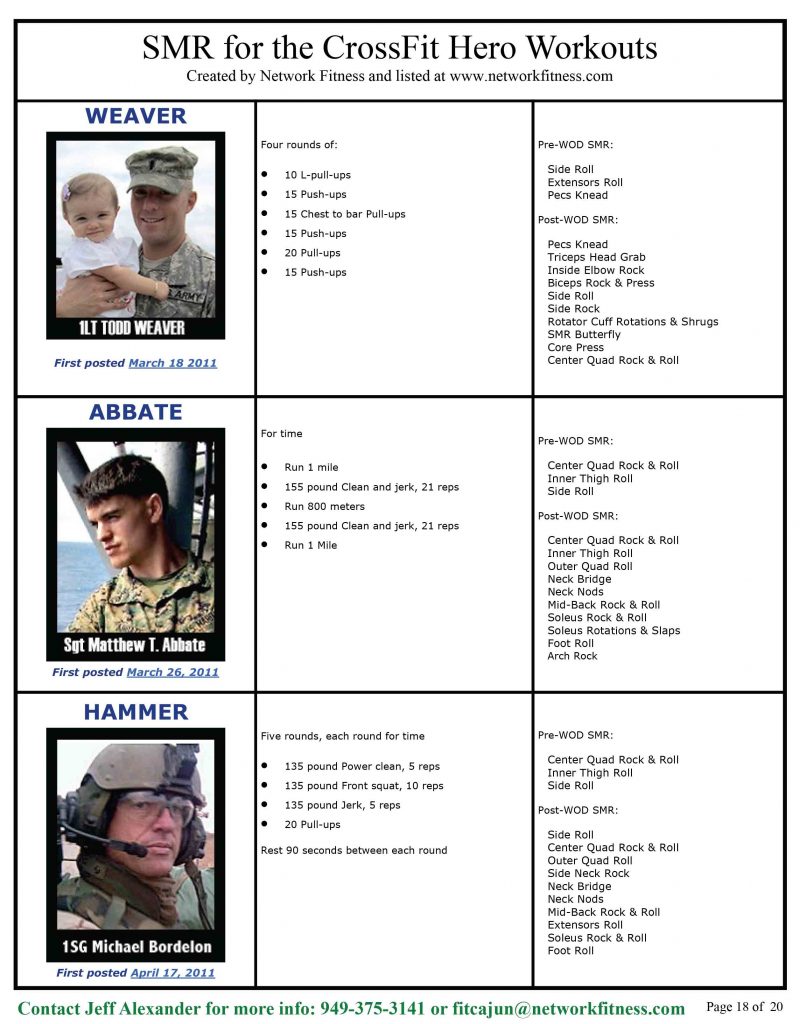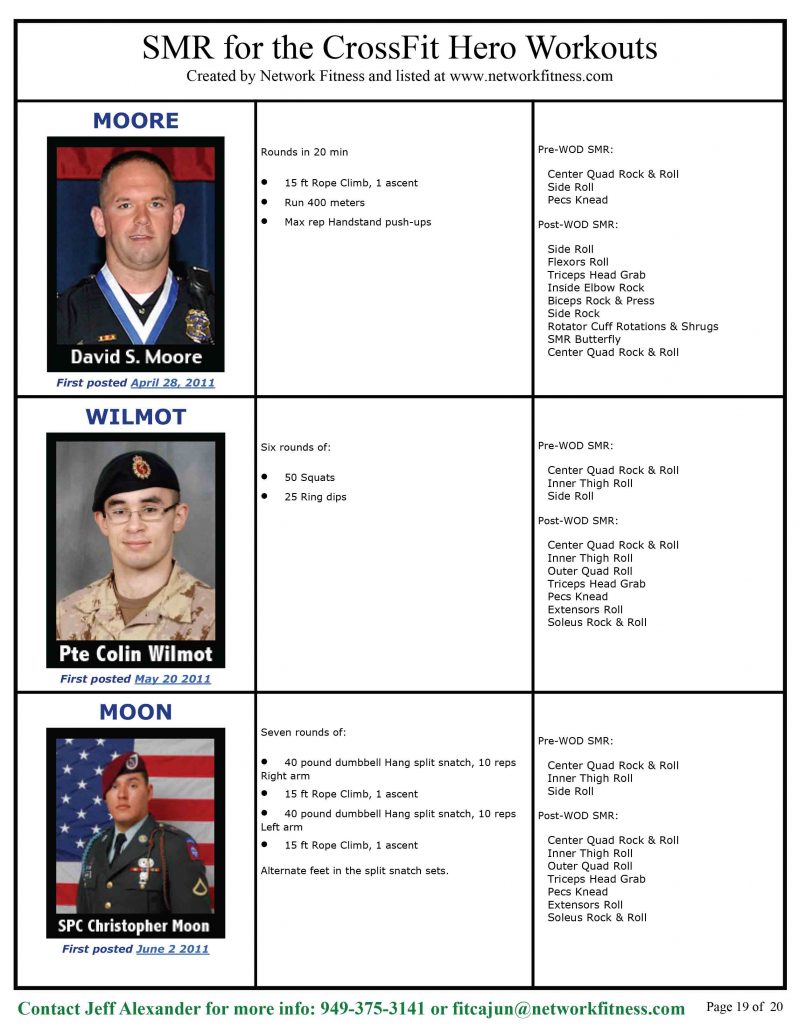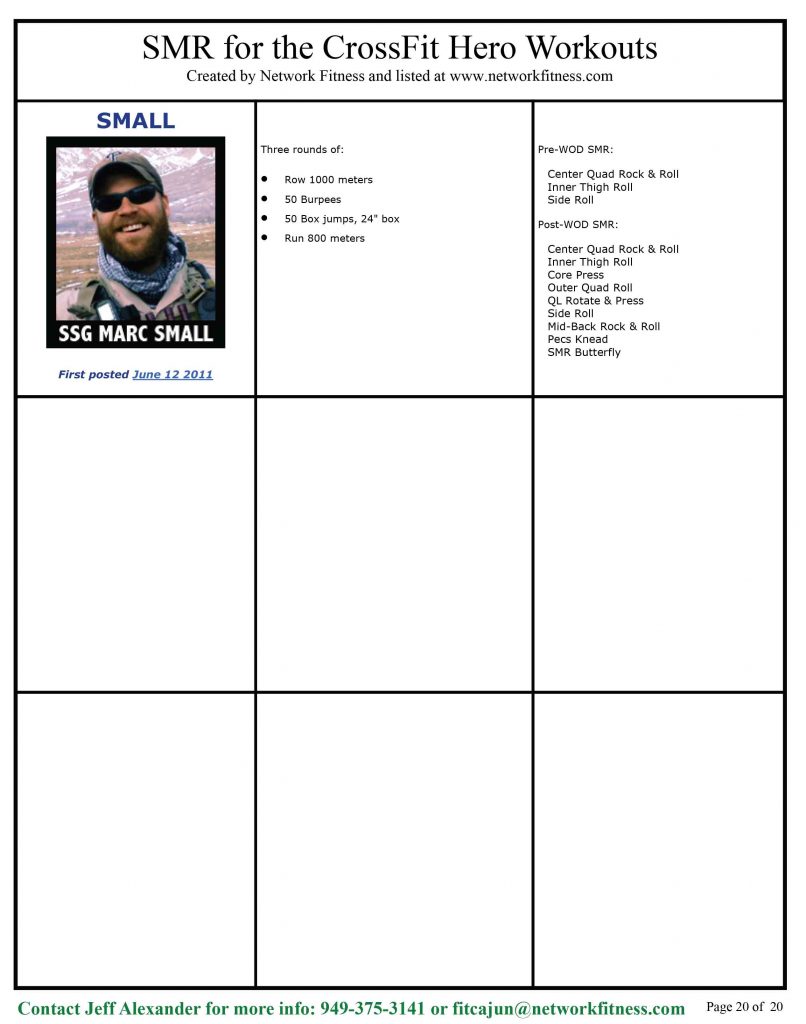|
After years of requests from the CrossFit community, we now have a list of the SMR movements for each of the benchmark named workouts. Feel free to download the Adobe PDF and print or email it to share with whomever you choose. We want you to perform better so that you can raise the level of competition out there. 3-2-1...GO! Click here to download the CrossFit Named WODs (as of 6-12-2011) |
|
Click here to download the list of SMR for the Girls Pre-WOD SMR should be done prior to your dyanamic warm up and practice movements. Remember, the purpose of SMR is to "turn off" stubborn, overly tight muscles. You want everything awake when you try to crush Fran or any other WOD. Post-WOD SMR should be done following your cool down stretches, as your heart rate returns to normal. Do the rolling movements at the gym, and the ball exercises much later when you have completely cooled down. You don't want to significantly restrict blood flow right after your WOD, and the localized pressure possible with the ball is likely to be too much to ensure adequate blood flow while you are lying on top of it. Take your time, breathe deeply, and focus on allowing your muscles to wrap around the ball or roller. Good luck! |
|
Click here to download the list of SMR for the Heroes Pre-WOD SMR should be done prior to your dynamic warm up and practice movements. Remember, the purpose of SMR is to "turn off" stubborn, overly tight muscles. You want everything awake when you try to crush Murph or any other WOD. Post-WOD SMR should be done following your cool down stretches, as your heart rate returns to normal. Do the rolling movements at the gym, and the ball exercises much later when you have completely cooled down. You don't want to significantly restrict blood flow right after your WOD, and the localized pressure possible with the ball is likely to be too much to ensure adequate blood flow while you are lying your body on top of it. Take your time, breathe deeply, and focus on allowing your muscles to wrap around the ball or roller. Good luck! (The pictures below include the 20 pages in the printable Adobe PDF linked above.) |
Tag: CrossFit
Soleus work for tight calves
Here is some raw footage from a SMR Coaches Clinic at CrossFit One World.
Interview with Jeff: What is SMR?
This short interview was conducted just prior to the SMR Coaches Clinic at CrossFit Invictus in San Diego. Jeff was asked to describe what SMR is, and why would you want to do it. He gives brief explanations to the science and methodology of self-myofascial release. If you aren't doing it, you should be! Watch the video to learn more.
Bike Wear World filmed this interview. They're big fans of SMR, and Jeff appreciates their help promoting it to the public. Thanks, Sami!
Want to share this video? Look below for the URL and the embedding script.
URL :
http://www.youtube.com/watch?v=aJUz4xvnHXs&feature=player_embedded
SMR for 091229
Here is a fascinating and easy-to-read over view of human tissue, Davis's Law, plyometrics, elasticity of tissues and plasticity: http://www.begin2dig.com/2009/06/plastic-vs-elastic-when-talking-about.html
Continue working on your "trouble area." What differences do you notice? Post comments regarding your progress.
SMR for 091228

Now that you have found your "trouble area," you need to work it every day until it is no longer your trouble area. If you don't yet know how to work through the muscles in that area, click here to download the SMR Introduction. You will get your best results by applying gently increasing levels of pressure to the tightest knots in your muscles for at least 30 seconds. Autogenic inhibition takes at least 20 seconds, but can take much longer. It is the physiological response that causes your muscle knots to relax.
It takes your muscles at least 3 weeks to remodel the number of sarcomeres (the smallest functional units within the muscles) so that the tight and shortened muscles stay lengthened and allow more functional movement, so STICK WITH IT!
SMR for 091227
If you don't know what your "trouble area" is, take about 15 minutes to find it...

Try to relax your body as much as possible while you lie on the massage ball with different parts of your body. You'll find one area that is unusually tight (and probably the most sensitive, too). Remember to chase the area with the most tension, not necessarily the most pain. A healthy, relaxed muscle will wrap around the ball to some degree. If you feel that you lie on the ball with one particular area and your muscle mass simply does not give at all, THAT is your spot!
Once you know your "trouble area," work it for as much time as it takes to get a significant release in that area. If the tight spot is in your center thigh or between your shoulder blades (where everyone has a significant amount of muscle mass), when the muscle "gives" and you get that release you should feel the ball sink into your flesh as your body absorbs the ball and it is FAR more comfortable to lie on it.
Post your comments regarding how easy it is to find your tightest muscle, and how long it takes to let go.

